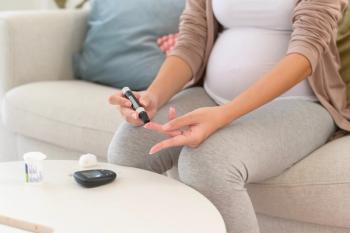
US Coronavirus Cases Jump to 34, Possible Asymptomatic Carrier Transmission Reported
As countries across the world enact policies to limit the scope of the novel coronavirus (COVID-19), a report of transmission via an asymptomatic carrier could make prevention more difficult and increase global concerns.
As countries across the world enact policies to limit the scope of the novel coronavirus (COVID-19), a report of transmission via an asymptomatic carrier could make prevention more difficult and increase global concerns.
Although no new countries have reported cases of COVID-19 in recent days, the number of confirmed cases has grown to 76,769. The vast majority (75,569) are still limited to China, although teh spread to 26 other countries has concerned health experts, international leaders, and the public. More than 2000 total mortalities have been reported as of February 21.1
Data from the World Health Organization (WHO) has suggested a rise in international transmission in recent days, though it is still at very low levels.2
The cases of Americans with COVID-19 have jumped to 34, including 11 travel-related cases and 2 cases of person-to-person spread. Furthermore, 3 Americans who were repatriated to the United States from Wuhan have been confirmed to have COVID-19, while 18 patients with COVID-19 have been repatriated from the Diamond Princess cruise ship.3
Possible Asymptomatic Carrier Transmission
A report published in JAMA described what appears to be an asymptomatic carrier within a familial cluster of 5 patients with COVID-19 symptoms and 1 family member with no symptoms who were enrolled into the Fifth People's Hospital of Anyang, in Anyang, China.4 All of the patients underwent chest CT imaging and real-time reverse transcriptase polymerase chain reaction (RT-PCR) tests for COVID-19 nucleic acid.4
The presumed asymptomatic carrier is a 20-year-old woman from Wuhan, China, who traveled to Anyang in early January. She met with her family and traveled to visit a sick relative in a hospital with no reported COVID-19 cases. After the relatives developed symptoms of COVID-19, the woman was isolated and observed.4
As of February 11, she had no reported elevated temperature, gastrointestinal symptoms, or respiratory symptoms. Chest CT images on January 27 and 31 showed no significant abnormalities and her C-reactive protein level and lymphocyte count were normal.4
Notably, results of RT-PCR testing were negative on January 26, positive on January 28, and negative on February 5 and 8. The second RT-PCR result was deemed unlikely to have been a false-positive, and was therefore used to define infection with COVID-19.4
Patients 2 through 6 of the familial cluster all developed COVID-19. None of them had been in contact with any other people who had traveled to Wuhan.4
According to the report, this sequence of events suggests that the virus may have been transmitted by the asymptomatic carrier. The authors noted that a previous study had reported an asymptomatic 10-year-old boy with the COVID-19 infection, but he had abnormalities on a chest CT. They concluded that further research to establish the mechanism by which asymptomatic carriers could acquire and transmit the virus is required.4
"If the findings in this report of presumed transmission by an asymptomatic carrier are replicated, the prevention of COVID-19 infection would prove challenging," the authors wrote.4
Global Policy Efforts
Global industry has also been affected by the virus, with quarantines and travel restrictions making it extremely difficult to maintain normal production levels. A report from DBRS Morningstar said that if the effects continue for many months, global disruptions will increase. The report added that China contributes more than a quarter of global manufacturing value.2
"Given China's role in global supply chains, the longer the outbreak curtails China's factory output, the bigger the risk of disruption elsewhere in the world," the report's authors said.2
According to the report, DBRS Morningstar's baseline assumption remains that the behavioral and quarantine effects will be about 1 to 2 quarters within affected companies, which the authors called "relatively short."2
Chinese officials have announced a range of policies to limit the economic impact, including cutting rates, buying extra securities to cushion the economy, and removing tariffs on certain US products beginning March 2.2 The authors noted that the recent removal of China from the US list of currency manipulators suggests that both countries are working to avoid fallout from slow economies.2
The WHO's strategic objectives include limiting human-to-human transmission; identifying, isolating, and caring for patients early; identifying and reducing transmission from the animal source; addressing crucial unknowns; communicating critical risk and event information; and minimizing social and economic impacts.1
Recommendations for the public continue to include avoiding close contact with sick individuals, frequent hand-washing, avoiding unprotected contact with farm or wild animals, and coughing or sneezing into the elbow.1
REFERENCES
- Coronavirus disease 2019 (COVID-19) Situation Report 32. World Health Organization; February 21, 2020. https://www.who.int/docs/default-source/coronaviruse/situation-reports/20200221-sitrep-32-covid-19.pdf?sfvrsn=4802d089_2. Accessed February 21, 2020.
- Coronavirus: Growing Policy Efforts But No Respite Yet. Morningstar DBRS; February 21, 2020. Received via email. Accessed February 21, 2020.
- Coronavirus Disease 2019 (COVID-19) in the US. Centers for Disease Control and Prevention; Updated February 21, 2020. https://www.cdc.gov/coronavirus/2019-ncov/cases-in-us.html. Accessed February 21, 2020.
- Bai Y, Yao L, Wei T, Tian F, et al. Presumed Asymptomatic Carrier Transmission of COVID-19. JAMA; February 21, 2020. https://jamanetwork.com/journals/jama/fullarticle/2762028?guestAccessKey=9e4e116a-7ab4-4a98-97b7-9b0bbedb5c6f&utm_source=For_The_Media&utm_medium=referral&utm_campaign=ftm_links&utm_content=tfl&utm_term=022120. Accessed February 21, 2020.
Newsletter
Stay informed on drug updates, treatment guidelines, and pharmacy practice trends—subscribe to Pharmacy Times for weekly clinical insights.








































































































































































































